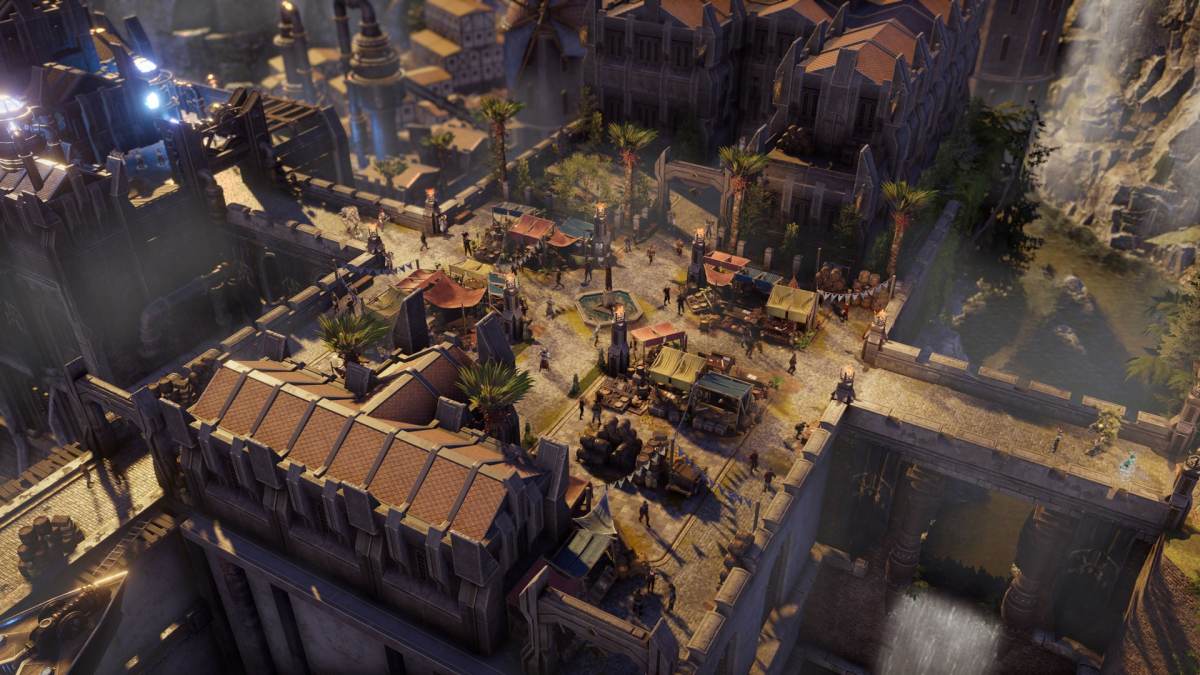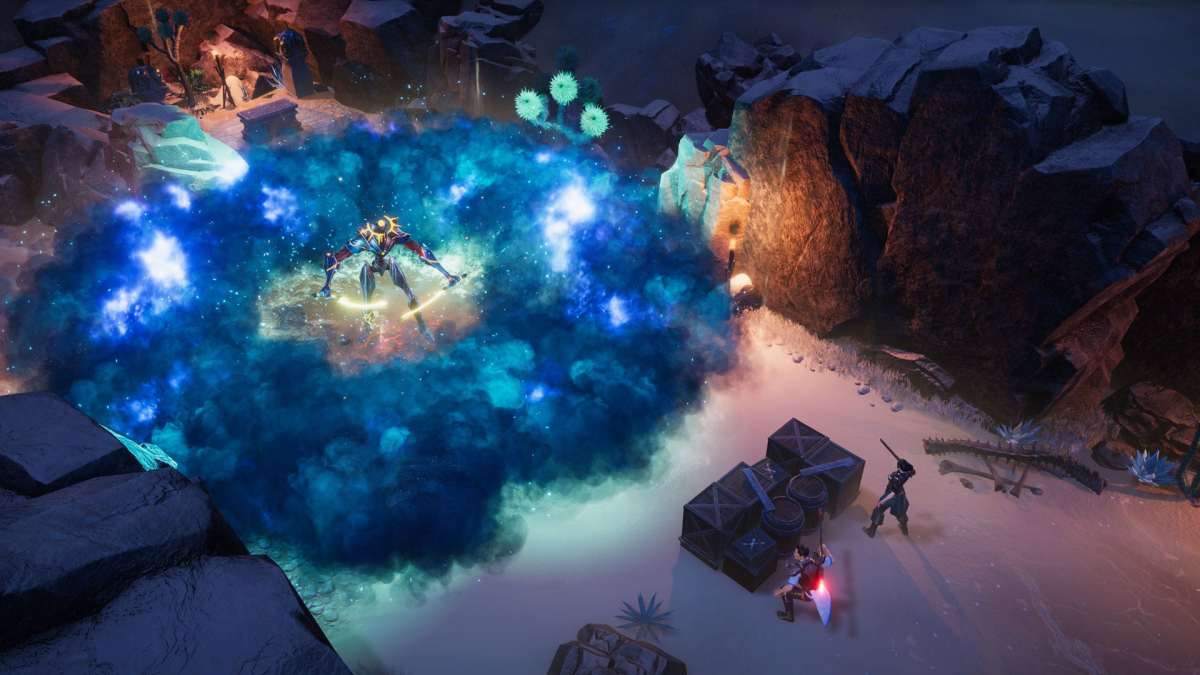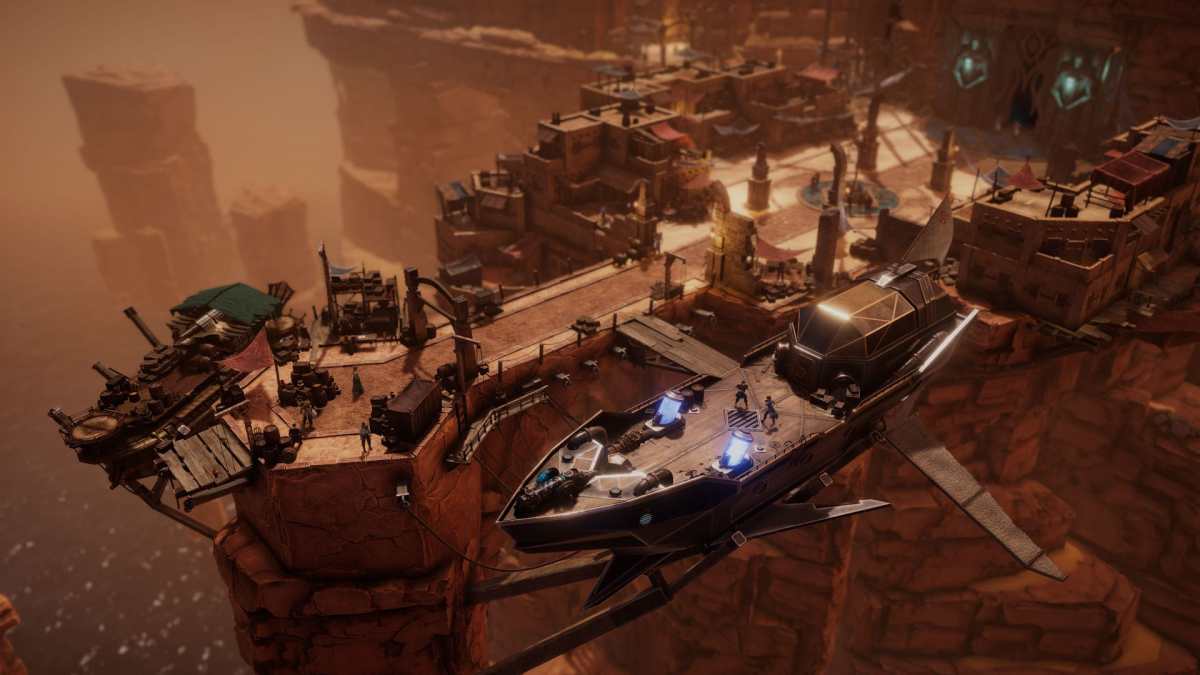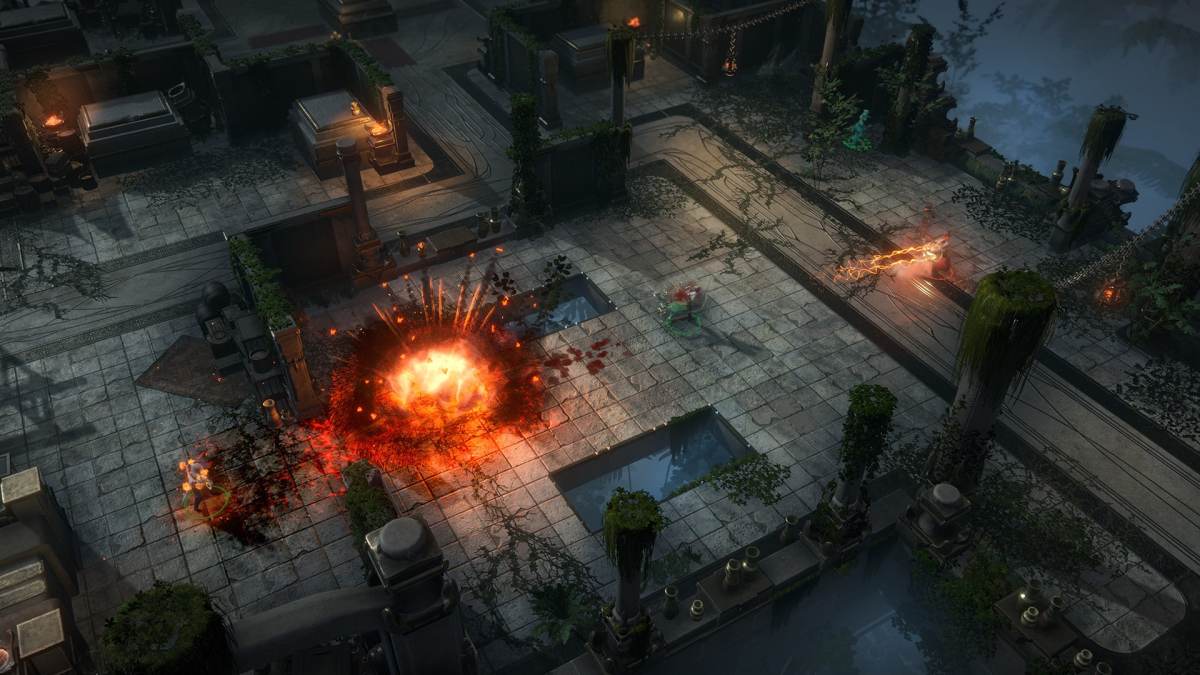Dark Envoy positioned itself as a non-linear “sci-fantasy” RPG with a mix of real-time and turn-based combat back in August 2019. Its influences range far and wide, as developer Event Horizon described the game as a mix of Divinity: Original Sin, XCOM, FTL, Mass Effect, and Dragon Age. Developing greatness takes time though, and delays eventually pushed launch from sometime in 2020 to sometime in 2022. Most recently, Event Horizon gave fans the game’s story trailer in April. We caught up with studio founder Krzysztof Monkiewicz to talk about all things Dark Envoy, including how it has evolved across development.
The Escapist: Talk to me about Event Horizon and its team. How did the idea for Dark Envoy come about?
Krzysztof Monkiewicz: We started as a studio of passionate gamers. We lacked experience, and the team was rather small — made up mostly of people who had just started their careers. We wanted to develop a game that we would have liked to play ourselves, and… we succeeded! Our debut game, Tower of Time, was received well: praised for experimentation and not being afraid to challenge its genre’s tropes.
Going with the flow, we started to work on Dark Envoy and the team grew. Fresh ideas, new experiences, and new skills came with each person added. With that, the project kept growing. In the beginning, we wanted to do a small game — a palate cleanser if you will — but we later discovered a much bigger potential in our team and the idea grew along with them.
Naturally, our next game is based on feedback from the ToT community, showing the impact the fans have on us as developers. We feel that Dark Envoy will be just as much as it is ours.
Event Horizon has often described Dark Envoy as “sci-fantasy.” Can you explain to me exactly what that means for Dark Envoy and how the team has incorporated those elements into the game’s story, world, and gameplay?
Krzysztof Monkiewicz: Keeping it simple: robots & wizards. We were inspired by Arthur C. Clarke’s statement that “any sufficiently advanced technology is indistinguishable from magic.” The universe of Dark Envoy is at its core a high fantasy setting that is going through very fast industrialization. Humans try to understand the arcane and are using the natural mythic resources to fuel their machines. They used the scientific method to reverse-engineer how the magic in this universe works and created their own technology based on these laws.
In terms of actual gameplay, this is shown by how technological and magical creatures have a completely different arsenal of abilities and use different tactics during combat. There are also interesting stories and characters that are deeply connected to the ever-rising conflict between these two opposing mindsets.

Talk me through Dark Envoy’s gameplay loop. What will players be doing in-between travel and combat?
Krzysztof Monkiewicz: The things that RPG players love! To start, we have an extensive and authentic combat system that relies heavily on the player’s party setup. Players can spend hours customizing their builds and optimizing the stats of each party member if they want to. They are able to manage their equipment by upgrading it or creating new ones through crafting and enchanting systems, which are intuitive to manage but give players new options for building their party.
To give the player a break from numbers and statistics, there are plenty of interesting story elements to discover and take part in. But companions are not just numbers to balance, as they have their own agendas and stories to tell.
Overall we aim for the gameplay loop to be dynamic and focused on combat, with story elements woven in-between, where all the other systems feed in to strengthen this idea.
What has Event Horizon done to push RPG gameplay forward with Dark Envoy? What RPG mechanics will faithful fans find familiar and different?
Krzysztof Monkiewicz: In Dark Envoy we took what is already familiar to RPG players and put a new spin on it. We have made adjustments by adding dynamism and giving players more control. For example, we are generally all used to giving orders and using skills, but in Dark Envoy we took a deeper tactical approach. Unit positioning, environment, and preparation before the actual fight are as valuable as a good party composition. Thanks to the smooth blend between pausing, using slow-time, and fast-paced action, the combat feels great.
Dungeon generation is another nice addition, as it increases the replayability value for those who crave challenging fights and situations to keep you on your toes.The fact it can be played in co-op is just a cherry on top!

What elements from Event Horizon’s previous game, Tower of Time, have been brought over to Dark Envoy? Is there anything from Tower of Time that Event Horizon is improving upon in this game?
Krzysztof Monkiewicz: The four-character party is back, but more tactical and complex. We listened to what our fans were saying about how certain mechanics felt stiff, and we improved upon or changed them completely to better fit the new combat dynamic. Also, combat does not take place in separate arenas; rather, now we explore locations, what we call dungeons, to reach the end of each one.
The main story is also an indirect sequel to Tower of Time.
Can the Skyship be customized? If so, how much freedom do players have to customize the ship?
Krzysztof Monkiewicz: The Skyship is your main base of operations. You are returning to your Skyship between the missions, and here you can modify the party, level up and train, craft, enchant, or research new technologies. You can also upgrade the Skyship, which would offer you certain advantages when traveling (e.g., ability to identify the type and strength of the enemies before you decide to land in a given location).
What are some of the ways players can impact the narrative?
Krzysztof Monkiewicz: Likely the biggest impact is that partway through the story a decision needs to be made which branches the narrative and locks certain elements in the game. This is a big decision for the player to make and impacts their alignment, among other things.
Players will feel the consequences of their actions in the way that the story is unraveled before them. They will face different quests, earn different rewards, and unlock different companions.
They can change how the characters play to a certain degree and force different gameplay tactics. Certain interactions can result in party members gaining personality traits, some of which are permanent.

Dark Envoy has four base classes and 16 specializations. Can you briefly discuss these classes and specializations?
Krzysztof Monkiewicz: Base classes are the archetypes, and the specializations flesh out certain aspects of what is already there. This allows players to create their own variations around it. For example, a base class warrior can become a Guardian (tank and battlefield control), Assassin (with unique stealth, high risk/reward class), Blademaster (high damage dealer, very mobile), or Praetor (an equivalent of technological paladin). Warrior class is the most similar to what you would expect from an RPG. Our other classes are more unique and diverse.
In 2019, Event Horizon said that a single Dark Envoy playthrough should take around 15-to-20 hours if a player wants to rush through. It’s been a couple years since then, so has that changed at all?
Krzysztof Monkiewicz: We still want the main narrative to be interesting without artificially making it bloated. The time to run through the game is around 15-20 hours if someone already knows how it plays and what to expect. We think it is the perfect length for the main storyline to not overstate its welcome.
Dark Envoy was originally set to feature turn-based combat but switched over to real-time combat (with slow or pause). Why did Event Horizon decide to switch combat styles?
Krzysztof Monkiewicz: We like to experiment a lot. The project kept getting bigger and bigger as we were adding new and interesting mechanics. At some point, we realized that turn-based not only became repetitive, but our best ideas didn’t exactly work with it. We developed a real-time prototype, and all of a sudden it clicked with us. Gameplay became much more dynamic and exciting, creating more depth.
How long has Dark Envoy been in development? What are some of the more noticeable ways the game has changed since development began?
Krzysztof Monkiewicz: It has been in development for 2.5 years already, which, for a game this size, is a long time. The biggest change we have had so far was the aforementioned turn-based into real-time change. Additionally, we have fully changed the way we do cut scenes, environment, and animations. The initial vision did not change much, but the overall quality and production values we aim to have went up a few notches.

What are some of the development challenges Event Horizon has run into during Dark Envoy’s development?
Krzysztof Monkiewicz: We wanted to create our own CGI trailer within the engine, which was a leap of faith that has paid off, in my opinion. The whole process was a huge undertaking, but the team was dedicated, adapted to the challenge, and pulled through.
The other big challenge we ran into was the turn-based / real-time change because, as a core gameplay mechanic, it took a lot of other minor mechanics along with it for the ride. We had to redesign almost everything to truly flesh out the combat. We still do a lot of tweaking to make it the best we can.
Is there anything else you’d like to add about Event Horizon, Dark Envoy, or the future?
Krzysztof Monkiewicz: We aim for the game to present a challenge for players, especially with side quests and during additional activities. We want you to face tactical challenges where, except for harder-to-kill monsters, there would be other obstacles — more dense enemy patrol routes, enemy placement, special debuffs that force you to be flexible in your strategy and builds, etc.
We want to create a quality product that we can enjoy and have fun with just as much as our fans and new players alike.
Dark Envoy is in development for PC, PlayStation 4, PlayStation 5, Xbox One, and Xbox Series X | S with a 2022 release date.
This interview has been edited for brevity and clarity.